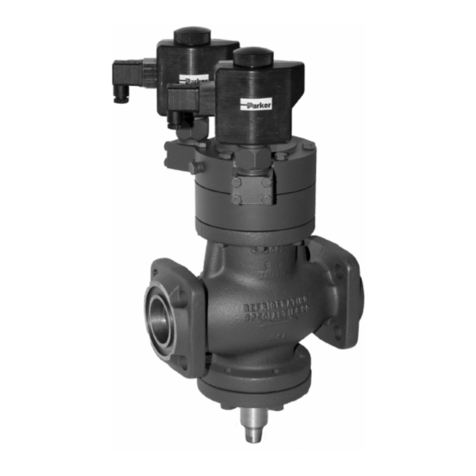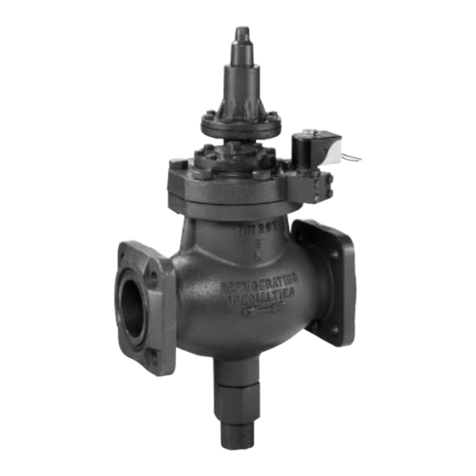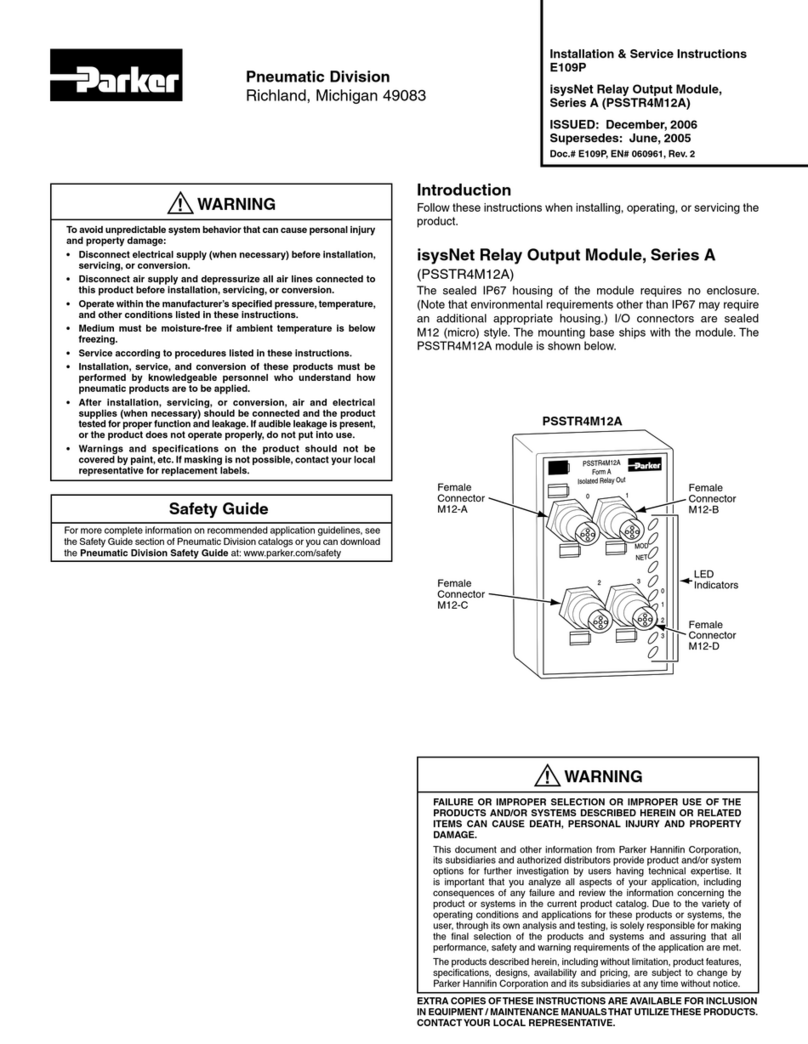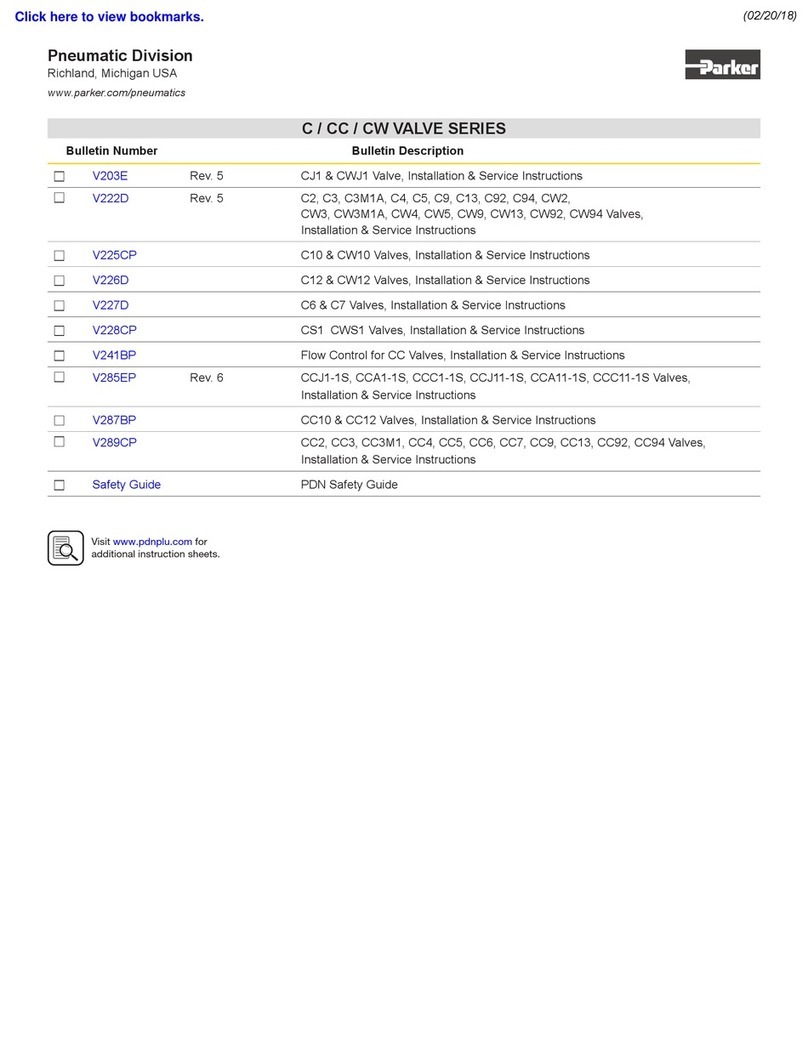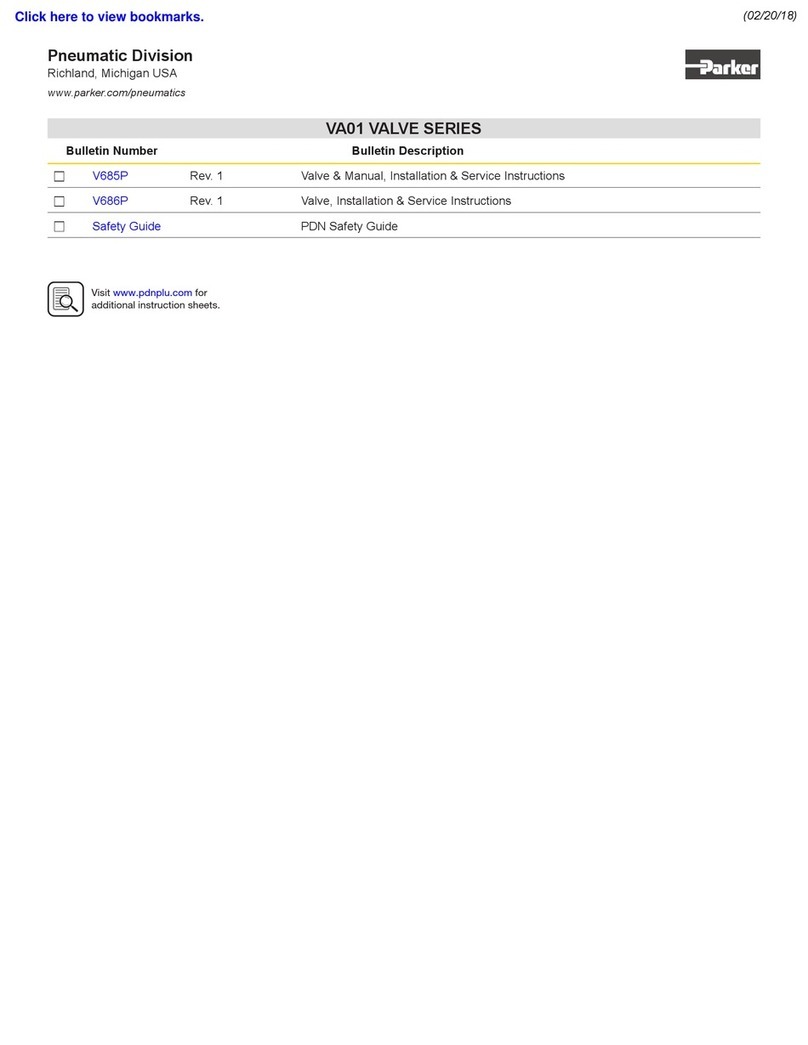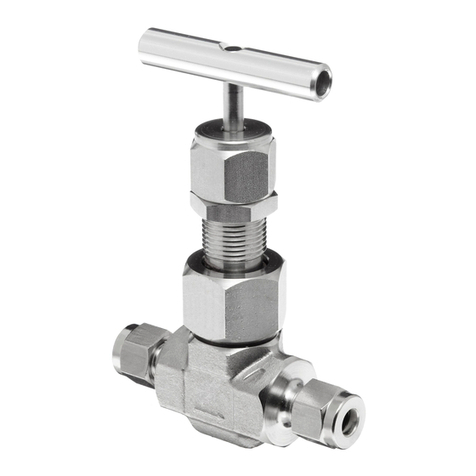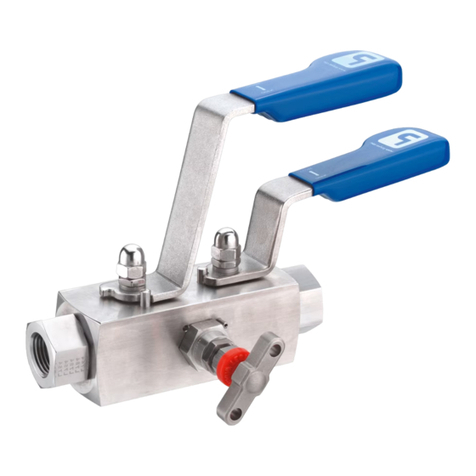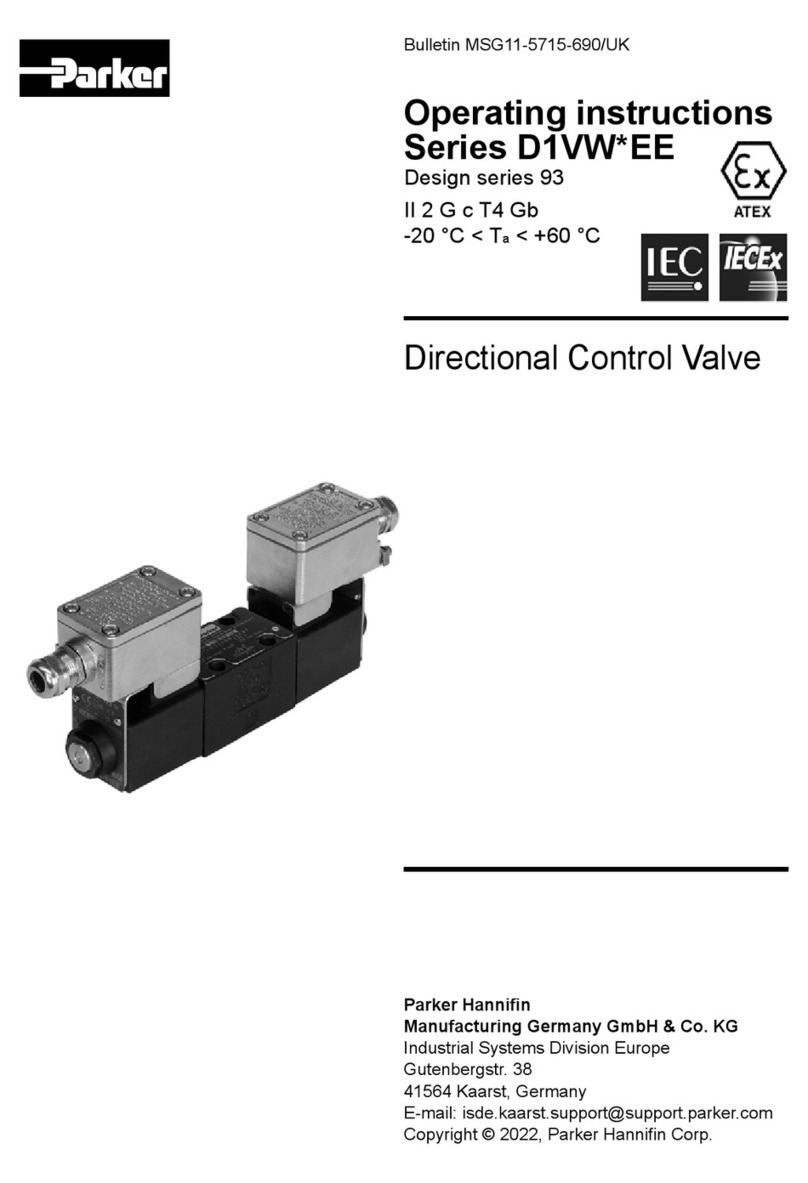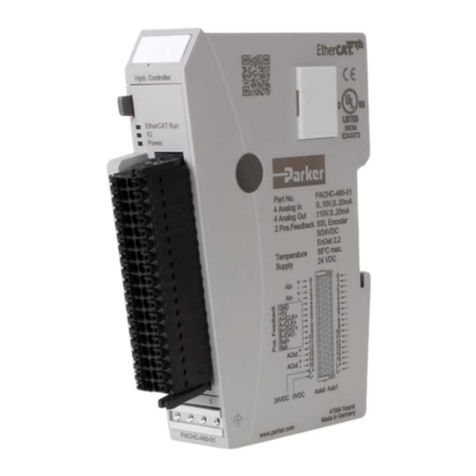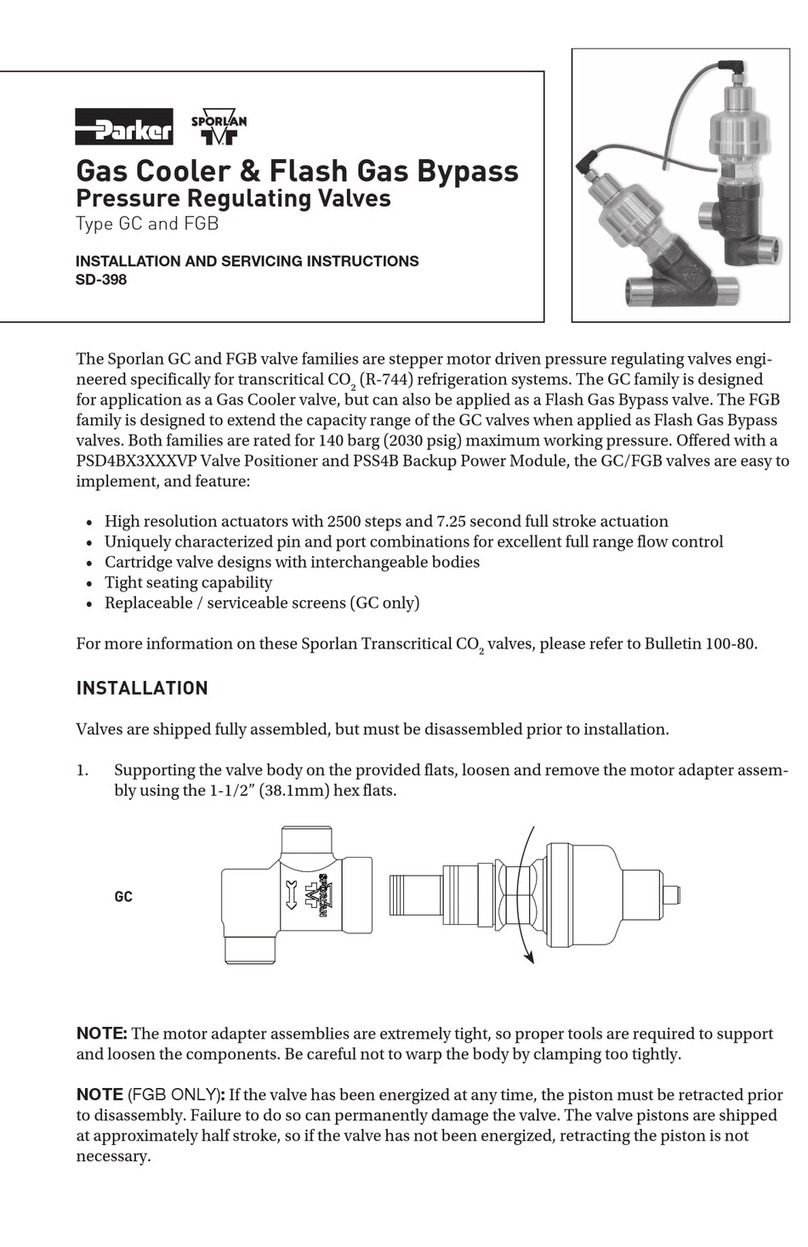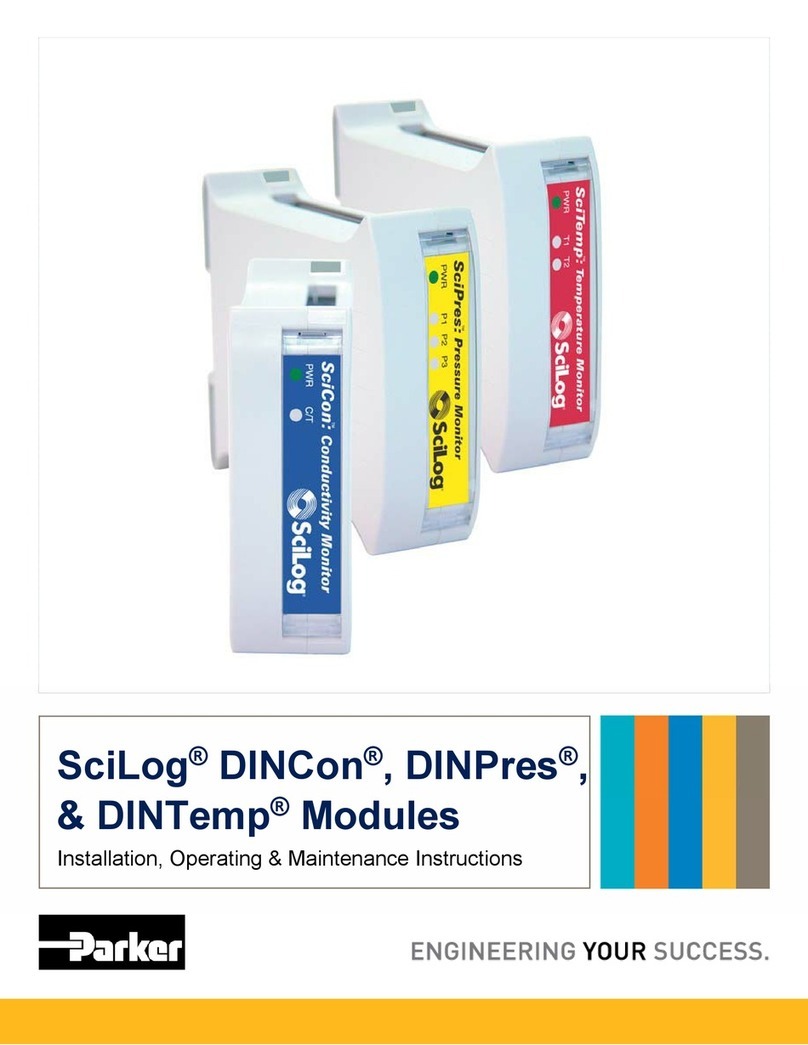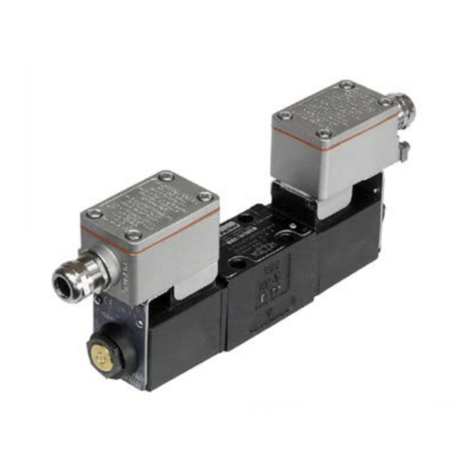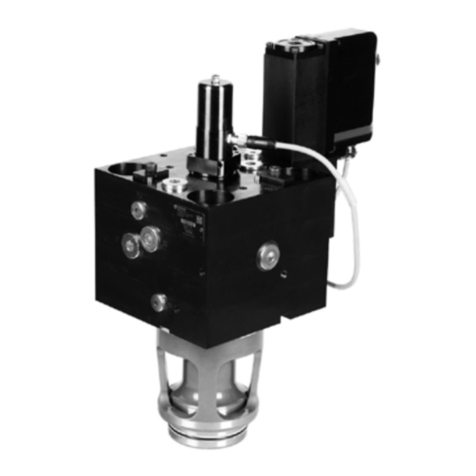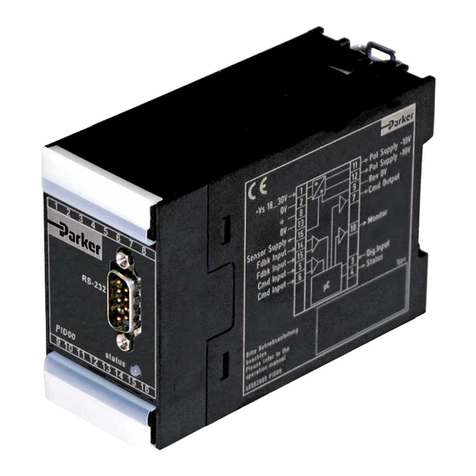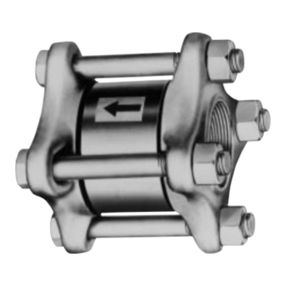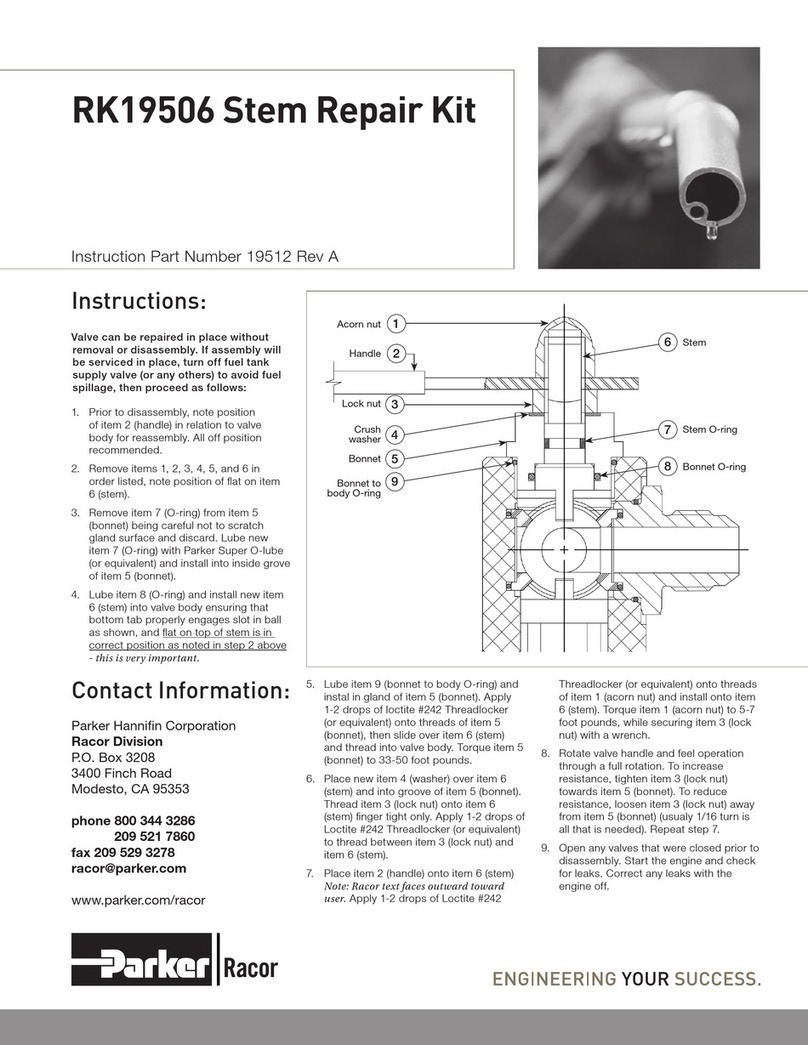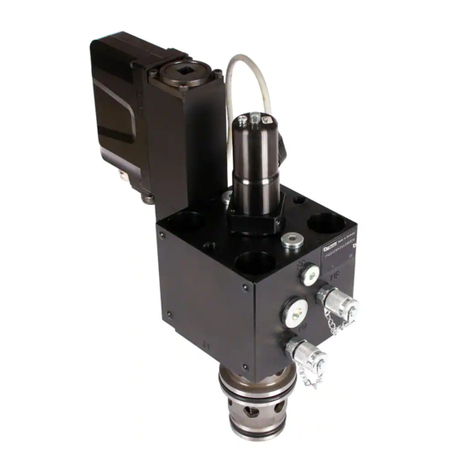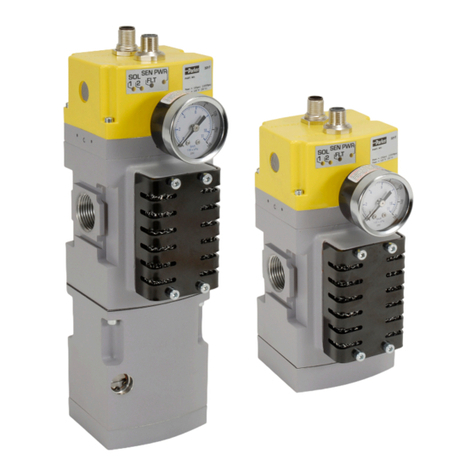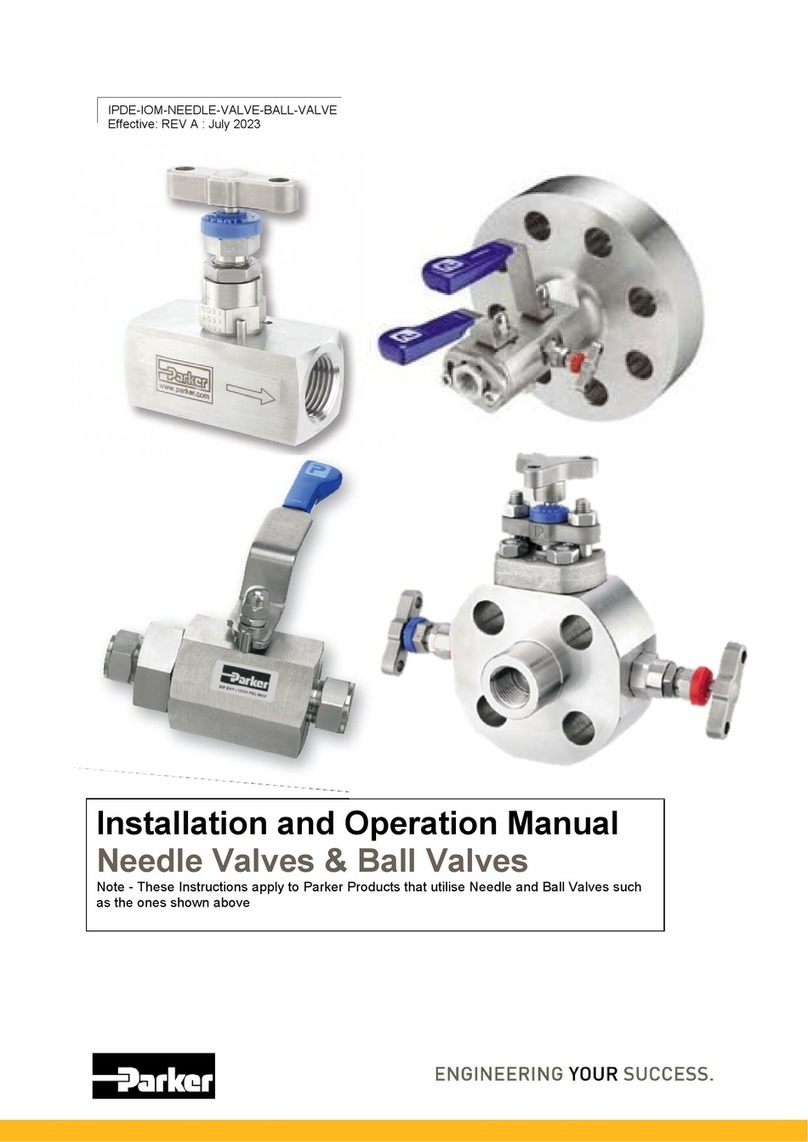8
Pilot Operated Proportional DC Valve
Series D*W*EE Explosion Proof
Operating Instructions
Parker Hannifin Corporation
Hydraulics Group
D_W_EE_92 5715-681 UK.indd CM 07.05.13
60 / 40 (50/60) 95 / 65 150 / 170 470 / 390
55 / 40 (50/60) 75 / 65 110 / 170 320 / 390
55 / 40 (50/50) 60 / 65 90 / 170 210 / 390
55 / 40 (50/50) 60 / 65 85 / 170 200 / 390
40 / 30 (30/50) 75 / 55 130 / 155 450 / 375
35 / 30 (30/50) 65 / 55 90 / 155 300 / 375
35 / 30 (30/50) 40 / 55 70 / 155 190 / 375
35 / 30 (30/50) 40 / 55 65 / 155 180 / 375
General
Design Directional spool valve
Actuation Solenoid
Series D31DW D31NW D41VW D91VW D111VW
Size NG10 NG10 NG16 NG25 NG32
Weight (1/2 solenoids) [kg] 6.0 / 6.6 7.6 / 8.1 9.7 / 10.3 17.9 / 18.6 67.4 / 68.0
Mounting interface DIN 24340
A10
DIN 24340
A10
DIN 24340
A16
DIN 24340
A25
DIN 24340
A32
ISO 4401 ISO 4401 ISO 4401 ISO 4401 ISO 4401
NFPA D05 NFPA D05 NFPA D07 NFPA D08 NFPA D10
CETOP RP 121-H
Mounting position unrestricted, preferably horizontal
Ambient temperature [°C] -20...+60
MTTFDvalue [years] 75
Hydraulic
Max. operating pressure [bar] P, A, B: 350; T: 140
Fluid Hydraulic oil in accordance with DIN 51524 / 51525
Fluid temperature [°C] -25 ... +60
Viscosity permitted [cSt] /
recommended [cSt] /
[mm²/s]
[mm²/s]
2.8...400
30...80
Filtration ISO 4406 (1999); 18/16/13
Flow max. [l/min] 150 170 300 700 2000
Leakage at 350 bar (per flow path) [ml/min] up to 100* up to 150* up to 200* up to 800* up to 5000*
*depending on spool
Opening pressure integral check valve [bar] n.a. see p/Q
diagram
see p/Q
diagram
see p/Q
diagram
n.a.
Minimum pilot supply pressure [bar] 5 7 5
Static / Dynamic
Step response at 95 % [ms] Energized / De-energized
DC solenoids Pilot pressure 50 bar
100 bar
250 bar
350 bar
AC solenoids Pilot pressure 50 bar
100 bar
250 bar
350 bar
Electrical characteristics
Duty ratio 100 % ED; CAUTION: coil temperature up to 135 °C possible
Protection class , Ex mbe II T4 Gb, IP66 (plugged and mounted correctly)
Code J N P
24 V = 230/50 Hz 110/50 Hz
±10 ±10 ±10
1.0 0.12 0.25
24 24 24
Supply voltage / ripple [V]
Tolerance supply voltage [%]
Current consumption [A]
Power consumption [W]
Solenoid connection Box with M20x1.5 entry for cable glands. Solenoid identification as per
ISO 9461.
Wiring min. [mm²] 3 x 1.5 recommended
Wiring length max. [m] 50 recommended
With electrical connections the protective conductor (PE W) must be connected according to the relevant regulations.
Technical data
